The 10 Coolest Wearables Of 2016 (So Far)

IoT You Can Wear
This year, we learned that the Internet of Things is much more personal than connected homes or smart cities -- consumers can use connected devices straight from their own wrists.
While in the past wearables took the shape of smartwatches, such as the Apple Watch or Samsung Gear S2, this year vendors showed off new functions for connected devices -- including a smart ring and smart helmet.
Now, consumers can use wearables to track their own activity and health, to translate foreign languages while traveling, and to play virtual reality games. Following are some of the coolest wearables CRN has seen so far in 2016.
(For more on the "coolest" of 2016, check out "CRN's Tech Midyear In Review.")
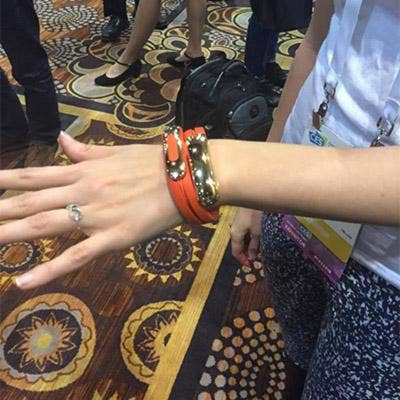
Helix Cuff By Ashley Chloe
Ashley Chloe's wearable, the Helix Cuff, has two functions for consumers -- fashion and music.
The Helix Cuff is a stylish bracelet (available in six colors, including a 24-karat gold version) with embedded extractable Bluetooth headphones. These headphones are powered by Qualcomm and aptX technology and provide high-quality stereo audio.
The bracelet, which was unveiled at this year's Consumer Electronics Show, is available for pre-order at $169.
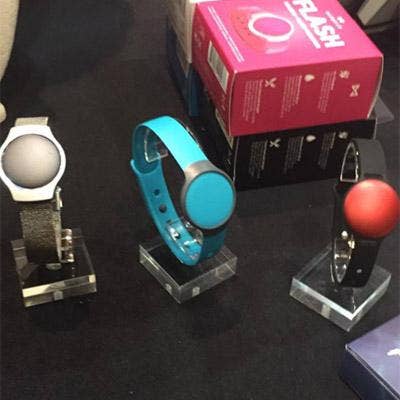
MisFit Ray
At this year's Consumer Electronics Show, wearable manufacturer Misfit introduced an activity tracker device, the Misfit Ray.
This bracelet contains a slim aluminum body with an LED ’eye’ that contains a three-axis accelerometer for tracking sleep and activity. If you aren't working out enough, the Misfit Ray will nudge you with a small vibration.
The MisFit Ray is also water-resistant in depths of 50 meters. This product is available now for $100.
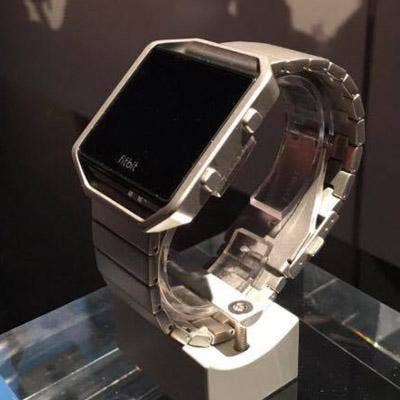
FitBit Blaze
FitBit in January took the wraps off its FitBit Blaze, which shies away from the fitness tracker's sporty-looking wearables to take a more high-end watch design.
The Blaze, which became available in March for $200, comes with a variety of choices, including high-performance elastometer bands, leather bands and stainless steel bands. The wearable tracks steps, sleep, burned calories and different types of exercise. The FitBit Blaze also auto-tracks activities like tennis, soccer and elliptical workouts.
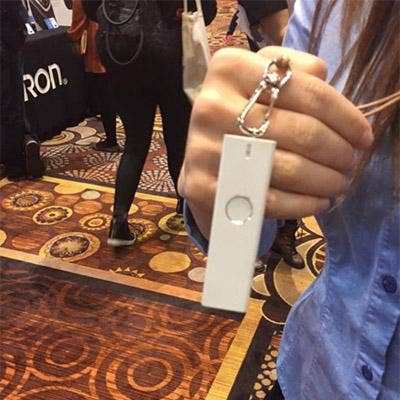
iLi Wearable Translator
In January, Logbar launched the iLi wearable, which is a translator that records words in one language and audibly translates them into another. The device can hook onto a lanyard and be worn around the user's neck. It works with English, Chinese or Japanese.
In order to translate, users press a button on the device and record one language, and then the unit audibly translates the words into another language. The release date for this wearable is this summer at an undisclosed price.
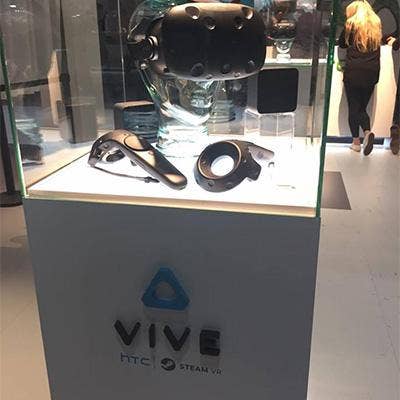
HTC Vive
In February, HTC gave Mobile World Congress attendees a first look at the consumer version of its virtual reality headset, the HTC Vive.
This $800 headset, released in April, comes in a consumer version with a Vive branding on the front, as opposed to the HTC branding seen on the Vive Pre. With the HTC Vive, users are immersed in a 360-degree virtual world, allowing them to do activities like paint in virtual reality.
The headband design contains a cutout for keeping the Vive's cables in order. The lighthouse tracking boxes also contain a more high-end finish.
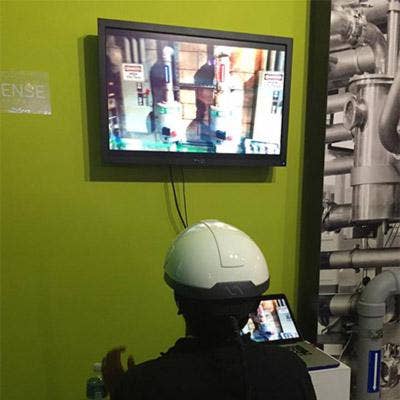
Daqri Smart Helmet
During this year's Consumer Electronics Show, Intel showed off the Daqri Smart Helmet, which is now shipping.
Powered by a Skylake Core m7 processor and Intel RealSense technology, coupled with industrial grade 360-degree sensor array and 4-D augmented reality displays, this smart helmet notifies workers in the industrial space of potential dangers.
Daqri's human-machine interface inserts real-time information, such as work instructions, safety information and mapping, to maximize productivity and safety for works in industrial settings.
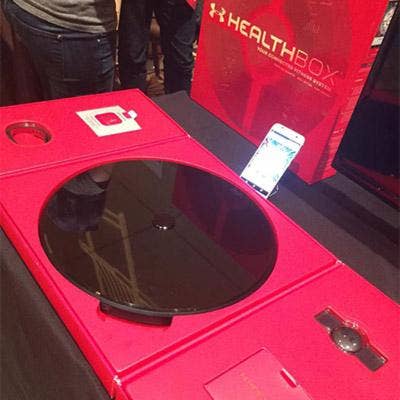
UA Band
Under Armor and HTC collaborated this year to develop HealthBox, a suite of connected fitness products.
At the helm of that suite is the UA Band, a band with wrist-based heart rate sensors that track daily activity and sleep. While UA Band doesn't have built-in GPS like many other fitness wearables, it tracks an array of workouts, such as cycling and weight lifting, and nudges users who haven't been active in more than 60 minutes.
With a curved design and rubbery feel, the UA Band looks like a true fitness wearable. The band also promotes Under Armour's fitness apps, including MyFitnessPal and MapMyRun. US Band ships as part of the $400 Healthbox or can be bought separately for $180.
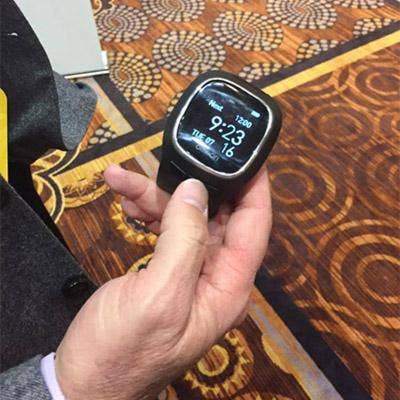
Omron Healthcare's Project Zero
Omron Healthcare unveiled its Project Zero wrist and upper arm blood pressure wearable monitors at the Consumer Electronics Show this year.
The Project Zero wrist blood pressure monitor looks similar to a smartwatch. This device goes beyond merely reading blood pressure to also provide data about physical activity and sleep in real time, as well as tracking hypertension levels and detecting irregular heartbeats through Bluetooth Smart technology.
The wrist monitor also nudges users to take medication and records the time and date they take it to improve and track compliance, according to Omron. The Project Zero devices will be ready for sale in late 2016 and will be in the $200 price range.
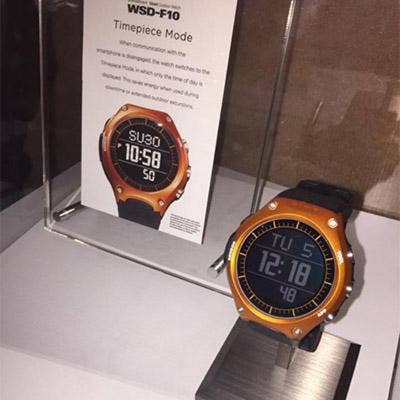
Casio's Smart Outdoor Watch
Electronics manufacturing company Casio in January took the wraps off its newest smartwatch for adventure junkies, the Smart Outdoor Watch.
This rugged smartwatch is built for outdoor lovers from hikers to boaters. The watch has a built-in microphone, is resistant to up to 50 meters of water and has a dual-layer LCD display, enabling it to conserve power and extend battery life. The Bluetooth 4.1-enabled smartwatch, which is based on Casio's popular G-Shock Watch, comes pre-installed with Android Wear apps, including RunKeeper and MyRadar Weather.
The $500 Casio Outdoor Watch, which became available in April, comes in color options of red, green, orange or black.

Oculus Rift
Pre-orders for the long-anticipated Oculus Rift, Facebook's new virtual reality headset, began in 2016 for $600. This headset is ’the easiest way to introduce non-gamers to VR,’ according to Oculus.
Oculus Rift comes with a mic, sensor, the Oculus Remote, and an Xbox One controller, making it perfect for a variety of games.